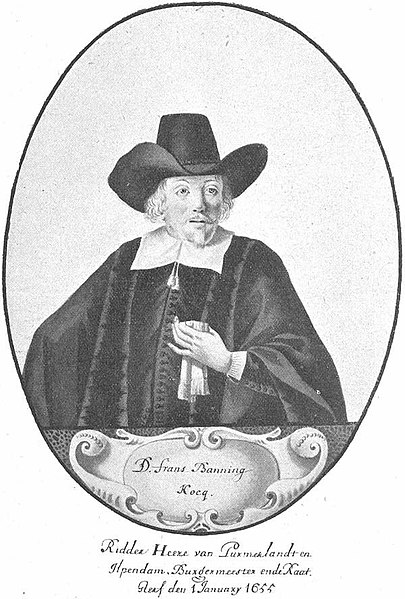Frans Banninck Cocq, free lord of Purmerland and Ilpendam was a knight, burgemeester (mayor) and military person of Amsterdam in the mid-17th century, the Dutch Golden Age. He belonged to the wealthy and powerful Dutch patriciate, the regenten, and is best known as the central figure in Rembrandt's masterpiece The Night Watch.
Coat of arms Frans Banninck Cocq, drawing by Pieter Jansz., 1648, Rijksprentenkabinet, Amsterdam
Banninck Cocq lived in "De Dolphijn", Singel 140
The Amsterdam archery militia whose patron saint was St. Sebastian, in 1653 by Bartholomeus van der Helst. Cocq is at the left.
Portrait of Frans Banninck Cocq, captioned Dr. Frans Banning Cocq probably comes from Pieter de Graeff
Militia Company of District II under the Command of Captain Frans Banninck Cocq, also known as The Shooting Company of Frans Banning Cocq and Willem van Ruytenburch, but commonly referred to as The Night Watch, is a 1642 painting by Rembrandt van Rijn. It is in the collection of the Amsterdam Museum but is prominently displayed in the Rijksmuseum as the best-known painting in its collection. The Night Watch is one of the most famous Dutch Golden Age paintings. Rembrandt's large painting is famed for transforming a group portrait of a civic guard company into a compelling drama energized by light and shadow (tenebrism). The title is a misnomer; the painting does not depict a nocturnal scene.
The Night Watch
17th-century copy by Gerrit Lundens with lines added indicating the areas cut down from the original painting in 1715
The Night Watch as it hung in the Trippenhuis in 1885, by August Jernberg
The painting during restoration measures (Operation Night Watch), October 2019








